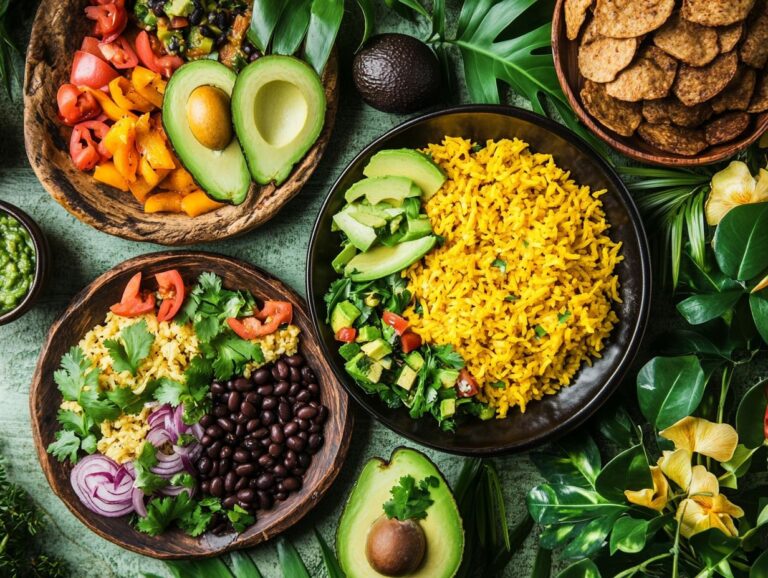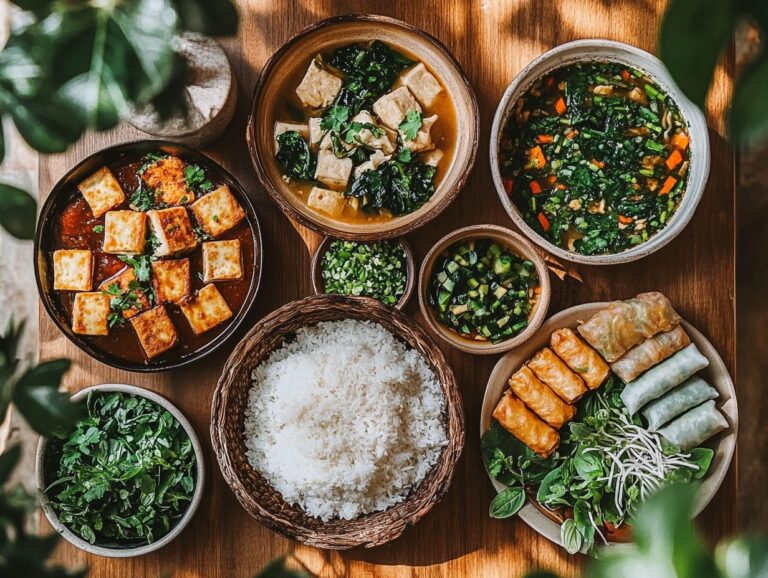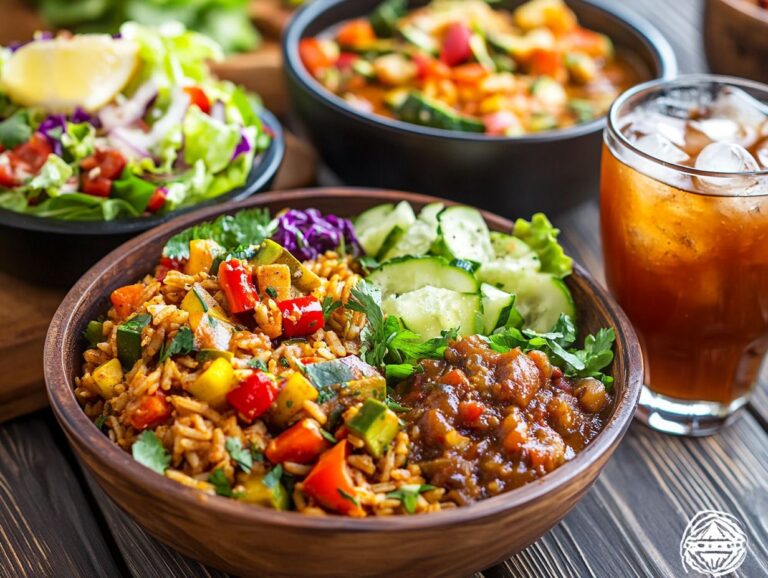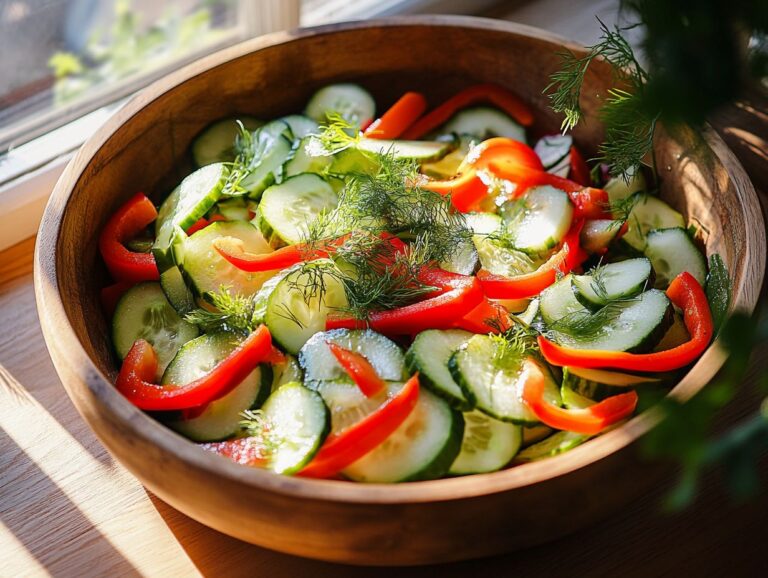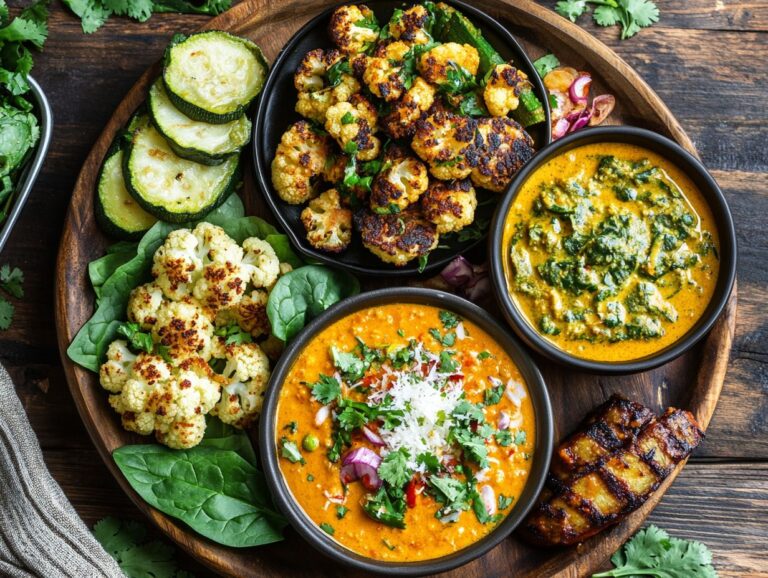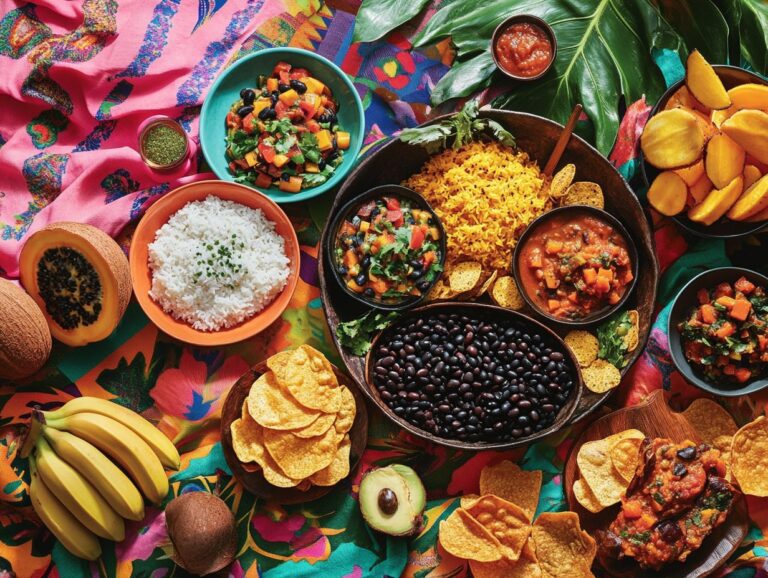Vegan spring rolls are not only a delightful and tasty snack but also a light and fresh option brimming with vibrant flavors and nutrition. Filled with a variety of fresh vegetables and delicately wrapped in rice paper, these spring rolls can be enjoyed as an appetizer, quick snack, or side dish, complementing almost any meal with their colorful presentation. They are versatile and can accommodate many dietary restrictions and preferences. The health benefits of vegan spring rolls are numerous, ranging from their nutritional advantages to their support for weight loss and digestion. We invite you to explore our guide, which includes suggestions for both common and uncommon ingredients, step-by-step vegan spring roll recipes, creative recipe variations, and tips for serving, storage, and innovative food presentation.
What are Vegan Spring Rolls?
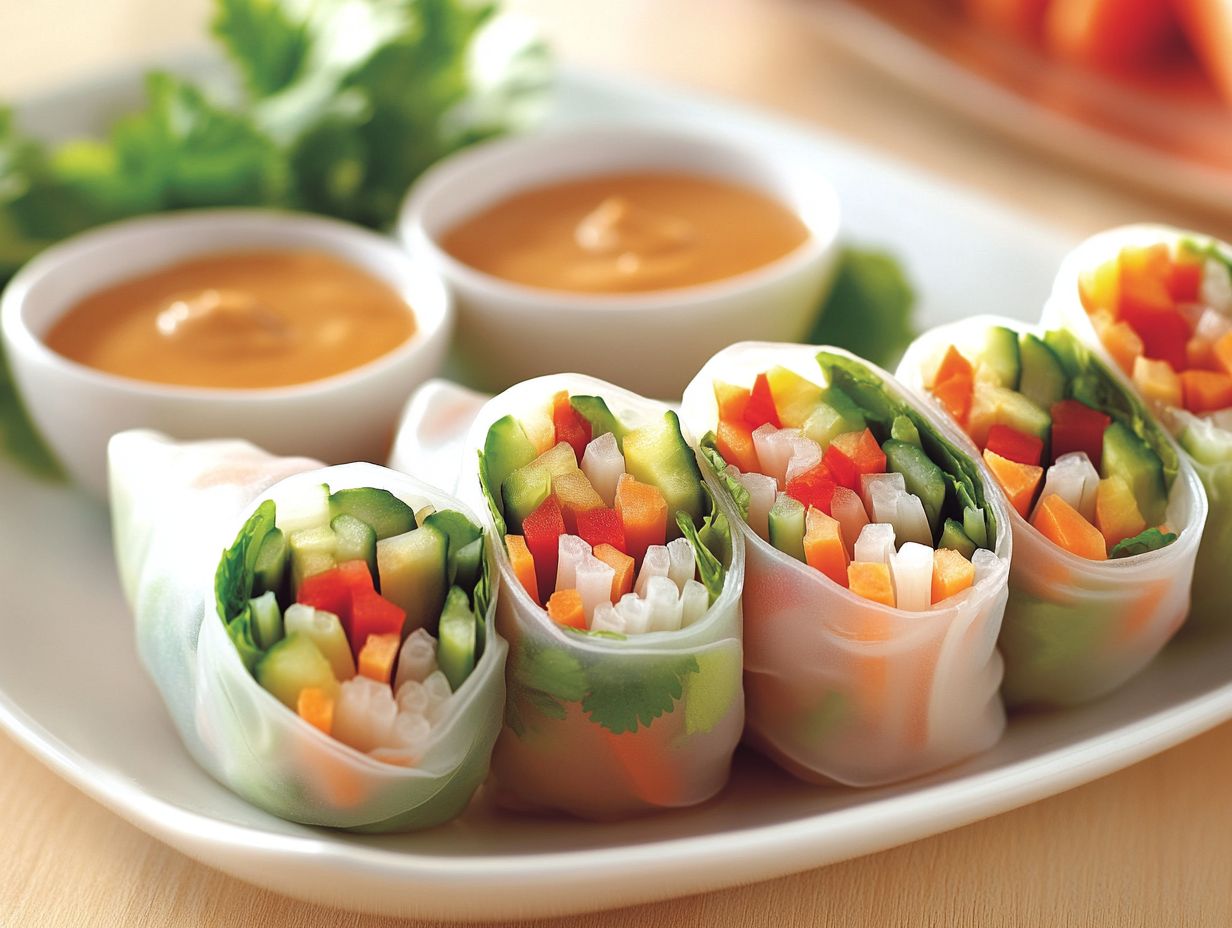
Vegan spring rolls are a delicious and healthy appetizer that originates from Asian cuisine, particularly Vietnamese cuisine. They consist of a wide variety of fresh vegetables, protein-rich tofu, and aromatic fresh herbs, all delicately wrapped in rice paper.
These light snacks cater to a vegan-friendly lifestyle and offer an enjoyable taste experience with their crunchy texture and vibrant presentation, making them a popular choice for entertaining and meal prep. They are not only satisfying in terms of flavor but also nutritious, making them an excellent addition for anyone seeking a healthy option.
Common Ingredients: Lettuce, carrots, cucumbers, and herbs such as mint or cilantro are commonly used, along with any fresh vegetables or proteins the cook prefers.
Variations: Avocado or chickpeas can be added for extra flavor and nutrition. Dips like peanut sauce or soy sauce can enhance the overall flavor profile.
Health Benefits: These spring rolls are low in calories and rich in vitamins, contributing to a healthy lifestyle.
Culinary Techniques: Steaming and pan-searing are two techniques that can be employed to make spring rolls more flavorful, allowing home cooks to experiment and discover recipes that are both healthy for their families and suitable for their dietary needs.
Health Benefits of Vegan Spring Rolls
Vegan spring rolls offer numerous health benefits and are an excellent choice for anyone seeking a nutritious, low-calorie meal.
Made from fresh vegetables such as carrots, bell peppers, cucumbers, and bean sprouts, these rolls are rich in vitamins, minerals, and fiber, supporting a healthy lifestyle.
Incorporating plant-based ingredients like tofu adds protein to the dish, while the use of rice paper makes them suitable for various dietary preferences, including vegan, low-fat, and gluten-free options for a diverse audience.
Nutritional Benefits of Plant-Based Ingredients
Vegan spring rolls, made from plant-based ingredients, offer energy-rich meals that contribute to healthy diets and lifestyles due to their diverse nutrient profiles.
Fresh herbs like cilantro and mint are essential additions to vegan spring rolls, enhancing flavor while providing health benefits such as improved digestion and anti-inflammatory properties. The vibrant colors of seasonal ingredients in vegan spring rolls indicate the abundance of vitamins and minerals they contain.
Furthermore, incorporating vegetables like bell peppers, carrots, and avocado boosts the fiber content of the rolls, helping individuals feel full and aiding in weight management.
Beans and lentils, commonly used in Vietnamese spring rolls and similar dishes, are excellent sources of protein, which is vital for muscle repair and overall energy levels. Healthy fats from ingredients such as sesame oil or nuts also promote heart health and facilitate the absorption of essential nutrients.
Together, these elements make vegan spring rolls not only a delicious dining option but also a wise choice for those who are health-conscious and want to meet their dietary needs, embracing a plant-based lifestyle.
Benefits for Weight Loss and Digestion
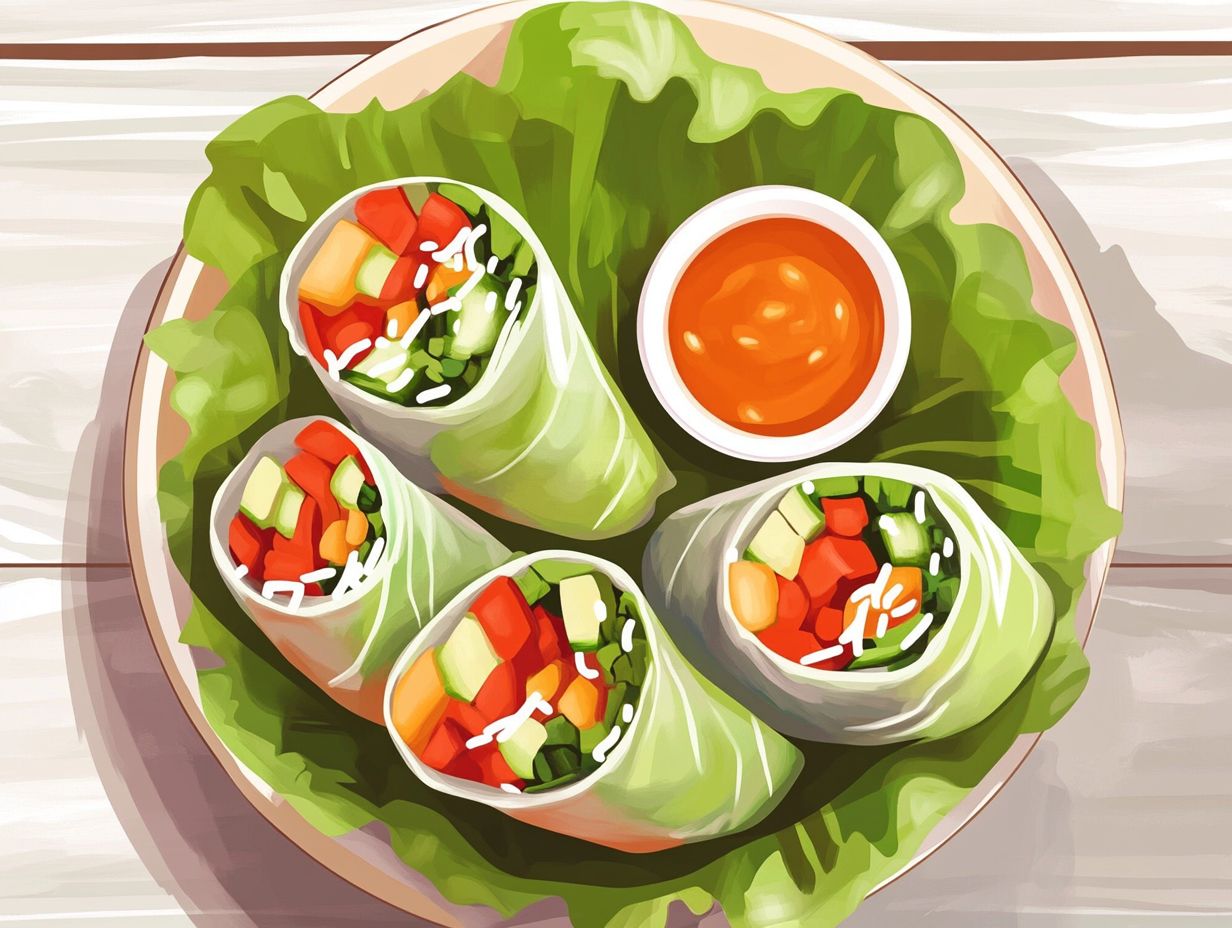
Vegan spring rolls can aid in weight loss and promote healthy digestion due to their low-calorie content and nutrient-dense, wholesome ingredients. The abundance of fresh vegetables provides dietary fiber, which is essential for digestive health and contributes to a feeling of fullness.
Consequently, vegan spring rolls are not only a delicious meal option but also a beneficial food choice for those looking to maintain a healthy weight. Dietary fiber from vegetables such as carrots, cucumbers, and bell peppers enhances these benefits by promoting regular bowel movements and helping to regulate blood sugar levels.
As a result, individuals attempting to lose a few pounds will find these rolls effective in satisfying their cravings. Additionally, vegan spring rolls offer versatility in meal planning; they can be enjoyed as a healthy snack, a light lunch alongside a fresh salad, or a tasty appetizer before dinner.
Incorporating whole, plant-based ingredients into these rolls encourages healthier eating habits, fosters mindful eating, and supports clean eating principles.
Ingredients for Vegan Spring Rolls
The ingredients used in vegan spring rolls are essential for achieving their authentic taste and vibrant texture. These rolls typically include fresh ingredients like vegetables, rice paper, and protein-rich tofu.
Common ingredients for vegan spring rolls consist of:
- Carrots
- Bell peppers
- Cucumber
- Bean sprouts
The bright colors, refreshing flavors, and crunchy textures of these vegetables make them a staple in Asian cuisine and a perfect fit for vibrant food trends.
Common and Uncommon Ingredients
Vegan spring rolls commonly feature fresh vegetables such as carrots, bell peppers, cucumbers, and aromatic herbs like cilantro and mint. Some recipes may also include less common ingredients, such as avocado or sesame oil, to enhance flavor and nutrition.
The versatility of these rolls allows for creative culinary expression, enabling cooks to customize their creations with a variety of fresh herbs and vegetables sourced from their gardens or local markets.
Additionally, seasonal produce like radishes, snap peas, or asparagus can make fantastic additions, offering delightful crunch and vibrant color. These ingredients not only enhance the visual appeal of the spring rolls but also provide vital nutrients, including vitamins A and C, which support overall health.
To elevate the flavor profile further, consider incorporating unique combinations such as mango slices paired with sriracha or chili sauce for a spicy-sweet contrast or roasted peanuts for added crunch.
Experimenting with different vegan sauces, such as peanut or tamari, can also transform the dining experience, resulting in a well-rounded dish that excites the palate with its diverse flavor profiles.
Step-by-Step Recipe for Vegan Spring Rolls

Making vegan spring rolls is a simple and enjoyable recipe, perfect for beginners or as a fun meal prep activity at home, offering convenience and economic meal ideas. This recipe allows you to use any fresh vegetables and herbs you prefer, all wrapped in rice paper, resulting in a crispy and refreshing appetizer that is sure to impress your guests on any occasion.
The following straightforward cooking methods will guide you in creating this easy-to-make yet delicious and satisfying dish that fits seamlessly into a healthy lifestyle.
Preparation and Assembly
The preparation and assembly of vegan spring rolls require careful selection of ingredients and a precise rolling technique. This rolling technique is essential for creating a tight spring roll that fries properly and ensures a balanced flavor profile.
Typically, the ingredients consist of fresh, crisp vegetables that enhance the dish’s visual appeal. Whether eaten raw or cooked, vegetables play a key role in spring rolls. Bright colors and crisp textures, such as those found in bell peppers, carrots, and cucumbers, contribute to the dish’s aesthetic charm.
These vegetables can be enjoyed raw or steamed for a different flavor and texture. Their thinness allows them to be easily cut into strips or julienne shapes, facilitating the rolling process and enhancing food preparation convenience.
To make the dish nutritionally and texturally complete, adding a protein or carbohydrate-rich component is beneficial. For vegan spring rolls, ingredients like bean sprouts or strips of tofu are ideal, as they contribute to a pleasing texture.
The rolling process is one of the most critical techniques in preparing spring rolls. The rice paper (or other wrapping) should be soaked in warm water until it achieves the right consistency for rolling. It’s important not to soak the rice paper for too long, as it can become overly soggy and may not offer the desired texture for proper frying.
To assemble the rolls, place the filling in the center, fold in the sides, and then roll tightly from the bottom. Additional ingredients, such as mint or cilantro, can be included to add a fresh herbal flavor and enhance aromatic qualities.
Dipping sauces are a common accompaniment to spring rolls. A popular choice is a spicy soy dipping sauce, made from simple ingredients like soy sauce, lime juice, and chili pepper. Another favorite is peanut sauce, which combines ground roasted peanuts, sugar, garlic, soy sauce, and sesame oil. For those who enjoy a bit of heat, sriracha sauce is also a popular option.
Variations and Substitutions
Vegan spring rolls offer a variety of variations and substitutions, making them easily customizable to suit individual tastes and dietary restrictions.
For instance, tofu can be replaced with tempeh, and additional vegetables such as avocado can be included.
Furthermore, different flavor profiles can be explored to enhance the dish and provide gourmet appeal.
Customizing for Personal Taste and Dietary Restrictions
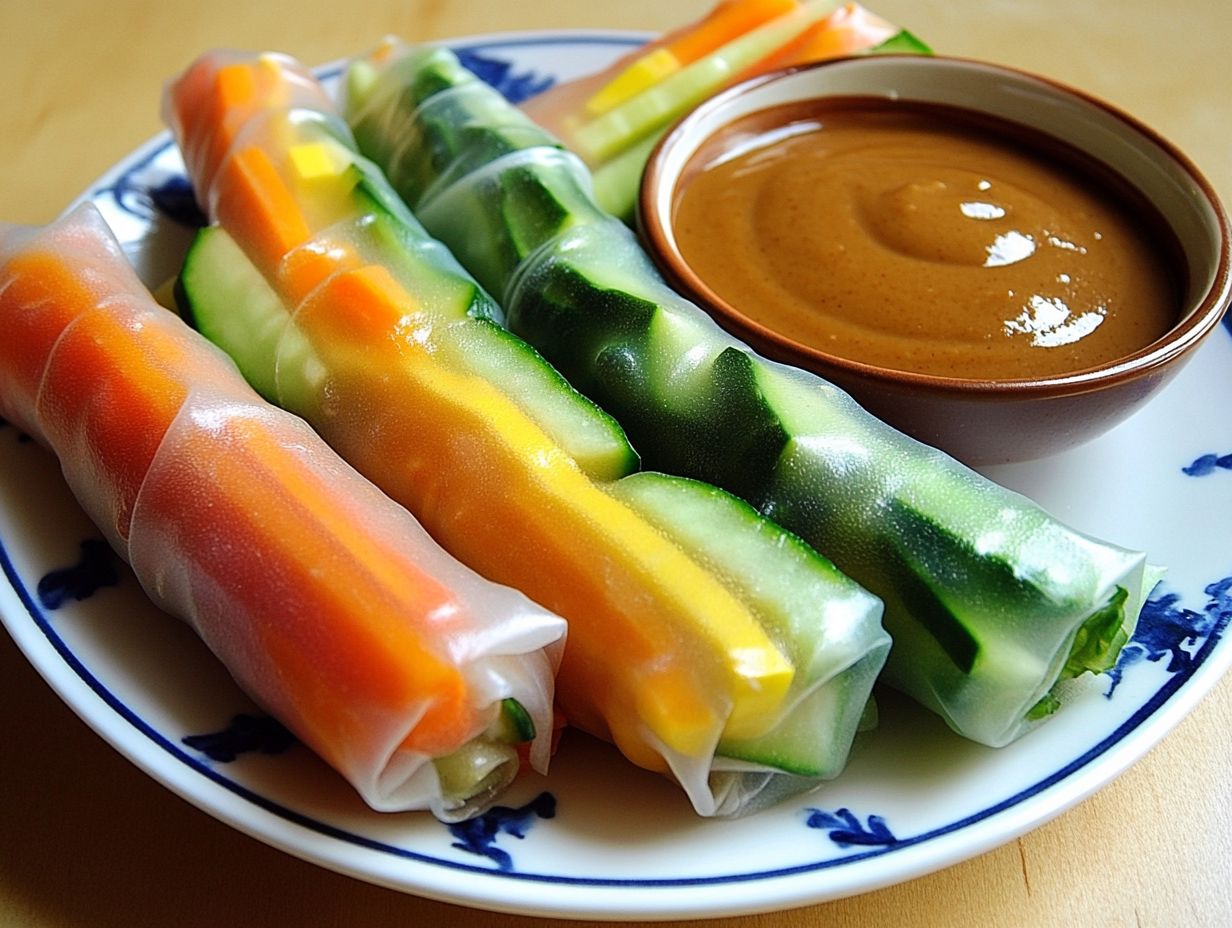
Vegan spring rolls can be adapted with seasonal ingredients and homemade vegan sauces to suit various dietary preferences and culinary trends.
Vegan spring rolls, a popular option in Asian cuisine, can be easily customized to suit personal tastes and dietary restrictions, making them a flexible choice for meal prep. This flexibility applies to many of the recipes and tips mentioned below. Whether you prefer a bolder flavor with spicy ingredients or need to make your dish gluten-free or nut-free, the options are virtually limitless. They serve as a light snack that is both satisfying and nutritious.
To customize the flavor, consider adding fresh herbs such as cilantro or mint for an extra burst of zest. Incorporating other plant-based ingredients like tofu and bell peppers can further enhance the texture and taste of your spring rolls.
For a gluten-free option, rice paper wrappers are ideal, while some people may opt for lighter lettuce wraps. You can also replace standard vegetable fillings like carrots, edamame, and cucumbers with roasted bell peppers or avocados to achieve a richer texture. This approach allows for a low-calorie, nutrient-dense meal that aligns with a vegan lifestyle.
If you want a nut-free version, replace peanuts with sunflower seeds or tahini to provide a similar texture without sacrificing flavor. Adding sesame seeds can also contribute to the crunchiness and flavor profiles of your spring rolls.
Serving and Storing Vegan Spring Rolls
Properly serving and storing vegan spring rolls is essential for preserving their crispness and freshness, making them perfect for on-the-go meals or as a party dish. These fresh spring rolls are not only convenient but also a wholesome choice for mindful eating.
You can enhance their flavor by serving them with a dipping sauce.
To keep the rolls moist and edible for an extended period, it is important to store them in a damp towel or an airtight container. This method ensures the freshness and vibrant flavors are maintained, making them a great option for quick snacks or entertaining.
Tips for Serving and Proper Storage
When serving vegan spring rolls, consider several important tips to enhance the experience, including selecting a suitable dipping sauce such as lime juice or chili sauce, deciding whether to serve them cold or warm, proper storage methods, and aesthetic presentation. Using colorful and vibrant ingredients can make your vegan spring rolls more appealing and in line with current food trends.
Always pair vegan spring rolls with a dipping sauce, as this is a traditional practice that complements the fresh ingredients and flavors of the dish. Options like vegan sauces or soy sauce with ginger and garlic are excellent choices. You can serve them either cold or warm based on personal preference, but it is best to serve them soon after preparation for optimal taste and crunchiness.
To store leftover spring rolls, wrap them in a damp cloth or place them in an airtight container in the refrigerator to keep them fresh for a longer period. For an appealing presentation, arrange the spring rolls on a colorful plate and garnish with herbs like cilantro and mint, which also hints at the ingredients inside.
Popular dipping sauces include peanut sauce and soy sauce with ginger, both of which enhance the flavor of the rolls. These sauces add depth to the flavor profiles and make the rolls a delightful appetizer for parties or family gatherings.
Using seasonal vegetables and herbs is recommended for the best taste and nutritional value, providing essential nutrients and plant nutrition that contribute to a balanced diet. Remember to refrigerate leftovers and consume them within a few days, ensuring to check for freshness before serving. Quality ingredients are essential for any dish, especially for one that primarily consists of raw food. Incorporating culinary herbs and techniques can elevate the food preparation process, making it more gourmet and satisfying.
